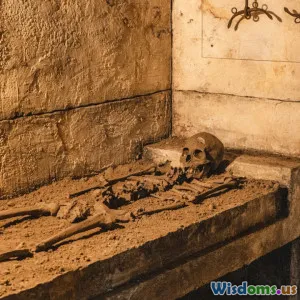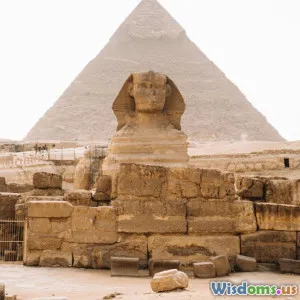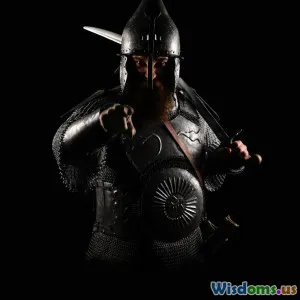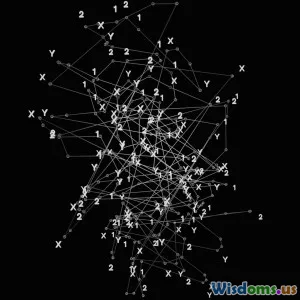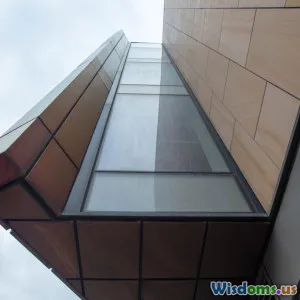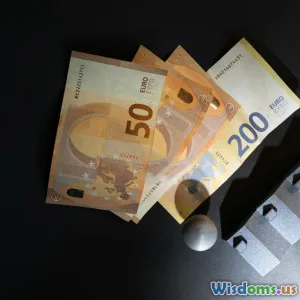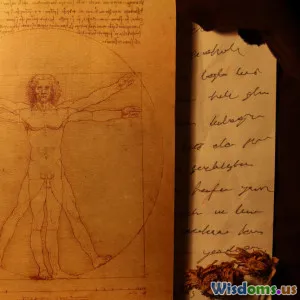
What Hidden Messages Are Concealed in Leonardo Da Vincis Artwork
8 min read Explore the mysterious hidden messages woven into Leonardo da Vinci's masterpieces and uncover the secrets behind his genius. (0 Reviews)
What Hidden Messages Are Concealed in Leonardo Da Vinci's Artwork?
Leonardo da Vinci, often hailed as the quintessential Renaissance genius, has fascinated art lovers, historians, and researchers for centuries. Beyond his celebrated technical mastery and groundbreaking observations, many have suggested that Leonardo embedded cryptic messages and profound symbolism within his artwork. But what are these hidden messages, and why did he conceal them? In this exploration, we dive deep into da Vinci’s masterpieces to uncover the secret layers beneath the surface.
The Genius Who Painted More Than Meets the Eye
To understand why da Vinci might have veiled messages within his paintings, we first have to appreciate his mind. Leonardo was not just an artist but a scientist, inventor, anatomist, and philosopher. His insatiable curiosity led him to study human anatomy, nature’s geometry, and the mechanics of the world. This multidisciplinary expertise often weaved together in subtle ways in his work, making his paintings more than just visual pleasures.
Leonardo lived in a time when expressing radical ideas openly could lead to persecution. Symbolism and coded imagery allowed for the communication of complex concepts to select audiences without drawing unwanted attention.
The Mona Lisa: Smiles, Symbols, and Science
Arguably the most famous painting in history, Mona Lisa holds secrets that continue to intrigue experts:
1. The Mysterious Smile and Psychological Intricacy
Leonardo’s enigmatic smile has baffled viewers for centuries. Modern analyses, such as those using retinal imaging, suggest Lisa Gherardini—the presumed subject—etched a subtle emotional complexity that shifts depending on where the viewer focuses. This interplay of perception hints at Leonardo’s understanding of human neurology. Could the smile itself be a message about the ambiguity of human emotion?
2. Hidden Landscapes and Architectural Codes
Upon close inspection, some researchers assert that the background in Mona Lisa isn’t just an idyllic landscape but contains geological and architectural references symbolizing the unity of humanity and nature.
3. Anatomical Insights in the Hands and Eyes
Leonardo’s passion for anatomy is evident in the realistic rendering of hands, which some experts link to symbolic gestures representing wisdom and balance. Some art historians argue that the direction of Mona Lisa’s gaze aligns with sacred geometry principles, a spiritual message embedded quietly for the learned observer.
The Last Supper: Symbolism Beyond the Biblical Narrative
The Last Supper is more than a biblical portrayal; it’s layered with hidden meanings:
1. The Inclusion of Mary Magdalene?
Popularized by books and films, speculation circulates around whether the figure to Jesus’ right is actually Mary Magdalene rather than John the Apostle—a controversial theory implicating secret knowledge about early Christian narratives.
2. Geometric Harmony and Mathematical Secrets
Leonardo composed the scene using precise geometric shapes, such as triangles and perspective lines, to guide the viewer’s eyes and emphasize divine harmony. These shapes also mirror Renaissance philosophical ideas about the cosmos.
3. The Symbolism of Food and Number
Detailed analysis of the food spread has revealed symbolism about spiritual nourishment and complementarity. The number of apostles and objects in the scene corresponds with numerological significance tied to Renaissance mysticism.
Anatomical Drawings: Messages of Human Perfection and the Divine
Leonardo’s anatomical sketches are legendary—detailed, accurate, and breathtakingly precise. But they serve a dual purpose:
1. Revelations of Human Structure
His dissections and drawings reveal the inner workings of the human body, championing empirical science over superstition. They carry the underlying message that beauty and function coexist perfectly.
2. Spiritual Dualism Through Science
Many of his diagrams, like the Vitruvian Man, symbolize the intersection of the earthly and divine. The imprint of perfect proportions suggests a universe governed by mathematical order.
3. Secret Insights for Future Generations
Leonardo deliberately codified some annotations and writings in mirror script, possibly as a personal safeguard or an intellectual puzzle, inviting future minds to unlock the full depth of his knowledge.
The Use of Mirror Writing and Cryptography
Beyond visible painting elements, Leonardo famously employed mirror writing in many of his notebooks. Scholars debate whether this method was intended primarily as a means to:
- Protect ideas from theft
- Enhance memory retention
- Simply accommodate his left-handedness
However, when combined with subtle visual cues in his works, this penchant suggests a tendency to veil messages for the erudite observer.
Why Conceal Messages?
Leonardo’s covert symbolism served multiple purposes:
- Intellectual Challenge: Encouraging deeper contemplation beyond casual viewing.
- Protection of Knowledge: Guarding innovative ideas against political or religious condemnation.
- Spiritual and Philosophical Expression: Communicating complex human and cosmic truths allegorically.
His art became a multidimensional language—part visual legend, part scientific manuscript, part mystical text.
Conclusion: The Art of Infinite Interpretation
Leonardo da Vinci’s artworks transcend mere portraiture or religious storytelling. Each painting, each sketch is layered with multiple codes waiting to be uncovered by curious minds. The hidden messages—whether encoded in smiles, hands, geometry, or text—reflect his unmatched genius and desire to communicate timeless truths.
Identifying and appreciating these secrets enrich our understanding, inspiring awe and reflection on the limitless capabilities of human creativity. Next time you gaze upon one of Leonardo’s masterpieces, remember you are looking not only at art but also at a carefully constructed puzzle bridging art, science, and the mysteries of existence.
References:
- Kemp, Martin. Leonardo da Vinci: The Marvellous Works of Nature and Man. Oxford University Press, 2006.
- Zhenya, Spirina. “Secrets of the Mona Lisa: Hidden Symbolism in Da Vinci’s Art.” Art History Review, 2018.
- Isaacs, Ronald. Science and Secrets in The Last Supper. Renaissance Studies Journal, 2020.
- Farago, Claire J. Da Vinci’s Anatomical Manuscripts: The Intersection of Art and Science. Journal of Medical Humanities, 2019.
Discovering the hidden messages in Leonardo’s works not only unlocks artistic secrets but invites us to view the world through the mind of a timeless master.
Rate the Post
User Reviews
Popular Posts












